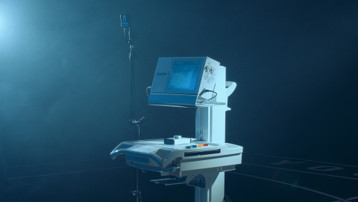6 Signs It’s Time to See a Spine Doctor
Beauty - Trend Magazine originally published at Beauty - Trend Magazine

Dr. Kaixuan Liu
Endoscopic Spine Surgeon Dr. Kaixuan Liu with Atlantic Spine Center explains back and neck symptoms that should prompt you to visit a specialist.
— Dr. Kaixuan Liu
WEST ORANGE, NJ, USA, July 26, 2022 /EINPresswire.com/ — Coping with back or neck pain might be so pervasive and troubling that it is hard to work or enjoy time off. But when is the right time to see a spine doctor? Six distinct signs can point the way toward making this important decision, according to Endoscopic Spine Surgeon Kaixuan Liu, MD, PhD, founder of Atlantic Spine Center.
With 33 bony vertebrae spanning the base of the skull to the tailbone, the spine unfortunately offers many opportunities for things to go awry, leading to conditions that can cause pain, stiffness, lost range of motion and other problems, says Dr. Liu, an endoscopic spine surgeon who performs minimally invasive surgery. After all, he says, our necks and backs have a lot of jobs, balancing and supporting the entire body while allowing us to bend, twist or merely stand upright.
“Almost all of us have dealt with back or neck pain at some point in our lives, so it can be difficult to know that it’s time to seek help,” Dr. Liu explains. “But pain is the body’s way of telling us something is wrong, and many of us, for too long, try to just ‘live with it’ or even ignore it. It’s usually a bad idea.”
According to Dr. Liu, here are 6 of the most common signs that should prompt you to see a spine doctor:
1. Your primary care doctor isn’t sure what to do next.
Make no mistake, you should tell your primary care doctor about your back and neck troubles. But if they’ve recommended home treatments such as rest, ice or heat packs, or over-the-counter NSAID pain relievers such as ibuprofen – and all have failed to improve your discomfort – it’s time to go to the next level. Spine physicians are specially trained to understand spinal anatomy, conditions affecting it, and the wide array of treatments available, Dr. Liu says. “It’s always best to see a doctor whose advanced training fits your complex needs,” he adds.
2. You’ve been suffering with back or neck pain for a long time.
What’s a long time? A rule of thumb in spine care suggests symptoms should improve in 6 to 12 weeks. If they don’t, and you’ve seemingly tried everything to feel better, seeing a spine doctor just makes good sense, Dr. Liu says. The spine doctor can get to the root of your problem by ordering x-rays and other imaging tests to visualize the spine and surrounding structures. Nerve tests can test nerve and muscle function, and blood tests can search for any infection that might be contributing to your pain.
3. You can’t live your days normally.
Can’t bend over, stand up straight, or twist sideways without pain? That sure would put a damper on your days, hindering daily tasks such as dressing, bathing, or doing household chores. “If you feel constantly limited in your movements and are starting to avoid going out, socializing, or participating in other aspects of normal life because you’re so uncomfortable, that’s a clear sign it’s time to visit a spine doctor,” Dr. Liu notes.
4. You can’t walk without pain or instability.
Being able to walk steadily is a non-negotiable “must” that keeps us fully functional in the world. So if you regularly feel unstable on your feet like you might teeter over, or have started falling, read this red flag as a sign to see a spine doctor, Dr. Liu says. Similarly, walking without pain is fundamental. “Don’t tolerate walking around with constant discomfort,” he emphasizes.
5. You’re experiencing weakness and numbness.
First of all, get to an emergency room immediately if you’re experiencing dramatic weakness and numbness in your feet and legs and/or signs of accompanying weakness in your bowel or bladder. These symptoms can result from a rare spinal complication called cauda equina syndrome, which requires urgent medical attention to prevent long-term paralysis and other life-altering effects.
But creeping foot and leg weakness or numbness can be a sign of a compressed nerve or disc herniation, which can worsen over time. “These conditions are best diagnosed and treated by a spine doctor, who will know which treatment approaches can dramatically improve the problem in short order,” Dr. Liu says.
6. You need a personalized plan going forward.
Not only will a spine doctor lay out a plan to tackle your immediate back and neck woes, but establishing an ongoing relationship means you’ll benefit in the years ahead as well. “Like other highly trained physicians, spine doctors understand the full array of treatments and techniques that can immediately improve your symptoms and anticipate what you might need going forward,” Dr. Liu says. “You’ll get a tailored care plan that’s just right for your individual needs.”
In the unlikely event that in-office treatments or procedures don’t alleviate your back or neck pain over time, your spine doctor may suggest surgery to improve symptoms and reduce further damage. But many spine surgeries can be done minimally invasively, using tiny cuts and requiring little trauma to tissues, Dr. Liu notes. “Surgery is only done when all other treatments have been exhausted, and modern, minimally invasive techniques lead to less blood loss and pain and a quicker recovery,” he says.
Atlantic Spine Center is a nationally recognized leader for endoscopic spine surgery with several locations in NJ and NYC. www.atlanticspinecenter.com
Kaixuan Liu, MD, PhD, is a board-certified physician who is fellowship-trained in minimally invasive spine surgery. He is the founder of Atlantic Spine Center.
Melissa Chefec
MCPR, LLC
+1 203-968-6625
[email protected]
![]()
Article originally published at https://www.einpresswire.com/article/582573513/6-signs-it-s-time-to-see-a-spine-doctor
Beauty - Trend Magazine originally published at Beauty - Trend Magazine

 ,
,




